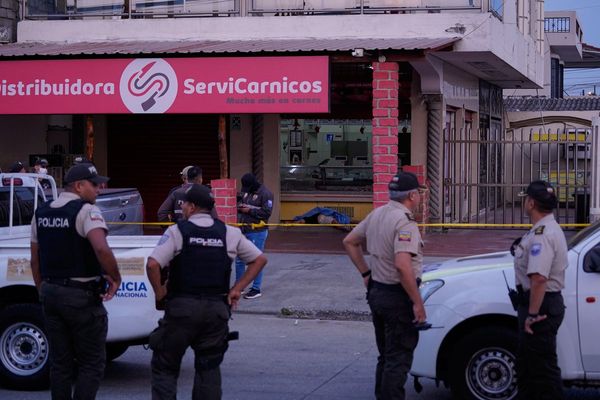
As you sail into Spain’s Bay of Santander, with its spectacular beaches and elegant waterfront architecture, you realise immediately that the capital of Cantabria is a place where people live very well indeed.
The beauty of arriving by ferry, slap bang in the heart of the city, is that you can dive straight into local life by heading for the Mercado de la Esperanza, a short stroll from the port. The imposing iron and glass structure was built in 1904 and is still the city’s main market today. Seeing the dazzling array of super fresh fish glistening on slabs on the rows of stalls is enough to give you an idea of the high gastronomic standards throughout northern Spain.
Buy a sobao sponge cake, made with rich butter from the bucolic Pas valley, to nibble on as you wander around upstairs, where dozens of tempting cheeses made in Cantabria, the Basque country, Asturias and Galicia are on display.
Driving west along the coast from Santander, you can dip into a string of traditional towns, such as the chocolate-box pretty Santillana del Mar. Book ahead to experience the astounding reproduction of the Altamira cave paintings at the nearby National Museum and Research Centre of Altamira. Just a short drive from there you’ll reach Comillas – which holds a market in the main square on Fridays. It’s a popular seaside resort in summer, but also has some surprising architecture, such as El Capricho, an extraordinary house richly decorated with sunflower tiles that was designed by Antoni Gaudí.
While you could happily spend at least a couple of weeks tootling along the coast, swimming at a different splendid beach every day, you are never far from the mountain ranges that rise up a short distance inland. Crossing from Cantabria into Asturias, Cangas de Onís makes a great base for exploring the Picos de Europa national park.
Time your stay to coincide with the Sunday market, where people converge from the villages in the hills to sell their produce and catch up with friends. Start by buying one of the traditional baskets, as you are going to need it.
A real feast for the senses, this is where you’ll find all the ingredients for the signature dishes of Asturias, such as fabada – an unctuous bean stew with chorizo and morcilla (blood sausage). Many varieties of apple are grown in orchards across the region and used to make cider, which you can try in the bars around the market.
Poured into tumblers from a great height to create a bit of fizz, it is fresh and zingy and goes very well with the cheeses that are the star of the show here. Cabrales is a dense, pungent blue cheese matured in mountain caves. Or you might prefer Gamoneu, which has a crystally texture and tangy finish. Some of these cheeses are made in cabins high in the hills around the beautiful Covadonga glacial lakes, Enol and Ercina, which are an easy drive from Cangas de Onís and popular with hikers.
Heading back towards Cantabria along twisting mountain roads, you stumble on tiny dairies in almost every village. Stop in the hamlets of Bejes or Tresviso to get a taste of rural life and try Picón Bejes-Tresviso, a deliciously creamy blue cheese. Drive deeper into the mountains to reach Potes, a gorgeous town in the heart of the Liébana area with plenty of characterful, rustic places to stay. Try to be there on a Monday morning when the market is in full swing and you can pick up everything you need for a hearty picnic.
You’ll probably want to spend at least a couple of days in attractive Potes, but when you feel like a bit of sea air again, drive east across Cantabria to the fishing town of Santoña, east of Santander. If you love anchovies, you’ll be in heaven here. But even if you think you don’t like them, the softer texture and more subtle flavour of the local varieties may well change your mind.
The quayside is packed with factories devoted to the fiddly process of filleting and preserving the fish in oil, a job usually done by women. You can visit some of the factories to see this for yourself or have a look around the Galería de Arte de la Anchoa – the Anchovy Art Gallery – which is actually a fun multimedia experience that leads you through the history and development of the industry. Of course you get to taste some too, and by the end will understand why Santoña anchovies are so highly-prized in Spain and beyond.
To get back to Santander, drive along the Costa Trasmiera, a surprisingly rural stretch of coastline that is popular with Spanish holidaymakers. Have a walk around the Trasmiera ecopark in the Santoña, Victoria and Joyel marshes, one of the most important wetland areas in northern Spain and a haven for wading birds.
Later on, stop off for a swim at one of the superb beaches, such as Berria, Langre or Somo. You won’t feel like leaving northern Spain – and there is so much more to explore – but at least when you get home you can dine out on the memories of all the wonderful local produce you discovered.







